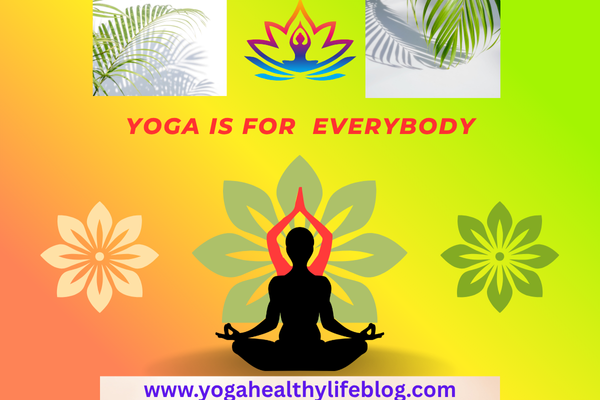
Are you curious about starting yoga but overwhelmed by complex poses you see online? Don’t worry—you’re not alone! Many beginners feel the same way. Yoga isn’t about perfect poses or being super flexible. It’s about connecting with your breath, honoring your body, and progressing at your own pace with yoga poses for beginners.
In this blog, you’ll learn 10 yoga poses for beginners that are easy to practice, powerful in benefits, and perfectly safe for absolute beginners. Plus, we’ll share pro tips, accessory suggestions, and answers to common questions—all in plain English.
Table of Contents
🌱 Why Start with Yoga Poses for Beginners?
Starting with simple poses builds confidence and a strong foundation. Beginner yoga:
- Improves posture and flexibility.
- Calms the mind and relieves stress.
- Boosts digestion and blood circulation.
- Reduces back and neck pain.
- Helps you sleep better.
- Is safe for almost all age groups.
The best part? You can do it at home with just a yoga mat and a little motivation!
🧘♂️ Top 10 Yoga Poses for Beginners (Step-by-Step):
1. Mountain Pose (Tadasana).
Benefits: Improves posture, increases body awareness, builds focus.
How-to:
- Stand tall with feet together.
- Distribute weight evenly on both feet.
- Raise your arms overhead.
- Breathe deeply and hold for 30 seconds.
2. Downward-Facing Dog (Adho Mukha Svanasana).
Benefits: Stretches the hamstrings, strengthens arms, relieves back pain.
How-to:
- Start on hands and knees.
- Lift hips up and back to form an inverted “V.”
- Keep hands shoulder-width apart, legs hip-width.
- Hold for 1 minute while breathing deeply.
💡 Tip: If your heels don’t touch the ground, that’s totally okay!
3. Child’s Pose (Balasana).
Benefits: Gentle stretch for back and hips, calming and grounding.
How-to:
- Kneel and sit back on heels.
- Fold forward with arms extended.
- Rest your forehead on the mat.
- Breathe deeply and hold for 1–2 minutes.
4. Cat-Cow Pose (Marjaryasana-Bitilasana).
Benefits: Eases spine stiffness, improves mobility and digestion.
How-to:
- Start on all fours.
- Inhale, arch back (cow), lift head and tailbone.
- Exhale, round spine (cat), tuck chin to chest.
- Repeat slowly for 1–2 minutes.
5. Cobra Pose (Bhujangasana).
Benefits: Strengthens the back, opens the chest, combats slouching.
How-to:
- Lie on your stomach.
- Place hands under shoulders.
- Press hands into mat and lift chest.
- Keep elbows bent and shoulders relaxed.
- Hold for 30 seconds.
6. Seated Forward Bend (Paschimottanasana).
Benefits: Stretches spine and hamstrings, calms the nervous system.
How-to:
- Sit with legs extended.
- Inhale and lengthen spine.
- Exhale and reach forward to touch feet.
- Hold for 1 minute.
7. Bridge Pose (Setu Bandhasana).
Benefits: Strengthens legs and glutes, improves digestion, relieves stress.
How-to:
- Lie on your back with knees bent.
- Feet flat on the floor, hip-width apart.
- Lift hips up while keeping arms on the mat.
- Hold for 30 seconds.
8. Easy Sitting Pose (Sukhasana).
Benefits: Great for meditation, improves posture, increases focus.
How-to:
- Sit cross-legged with a straight spine.
- Rest hands on knees or thighs.
- Close eyes and focus on breath.
- Practice for 5–10 minutes daily.
9. Legs-Up-the-Wall Pose (Viparita Karani).
Benefits: Reduces leg fatigue, improves circulation, relaxes the mind.
How-to:
- Lie down near a wall.
- Swing your legs up against the wall.
- Relax arms by your side.
- Stay for 5–10 minutes.
10. Corpse Pose (Savasana).
Benefits: Total relaxation, resets nervous system, relieves anxiety.
How-to:
- Lie flat on your back.
- Legs slightly apart, arms relaxed.
- Close eyes and breathe naturally.
- Stay for 5–10 minutes.
🛍️ Recommended Accessories for Yoga for Beginners:
To enhance your Yoga-Pranayama practice, having the right accessories can make a big difference. A non-slip yoga mat provides the perfect foundation for seated breathing techniques, while a comfortable zafu cushion supports a straight spine and relaxed posture. Beginners and enthusiasts alike can benefit from a well-guided yoga book that explains breathing techniques in detail. And to maintain consistency, using a digital timer or interval app can help you stay focused without watching the clock. You can check out our handpicked recommendations mentioned here above – Perfect for every level of practice!
🙋♀️ Common Questions Beginners Ask:
❓How often should I practice yoga as a beginner?
Start with 3 times a week and slowly increase as your body adjusts.
❓What’s the best time to do yoga?
Early morning or evening—whenever you can stay consistent.
❓Do I need to be flexible to start yoga?
Not at all! Yoga is for gaining flexibility, not requiring it.
🧠 The Mind-Body Connection in Beginner Yoga:
One of the most overlooked benefits of yoga for beginners is how powerfully it strengthens the mind-body connection. As you move through simple poses while focusing on your breath, your awareness shifts inward. You start to notice how your body feels, where you hold tension, and how your thoughts influence your posture and mood. This gentle self-awareness is the first step toward emotional healing and inner clarity. Over time, even basic poses help reduce anxiety, increase patience, and boost self-confidence—both on and off the mat. Yoga teaches you to be present, and that’s a gift you’ll carry into every part of life!
🌟 Final Words: Your Yoga Poses for Beginners Journey Starts Today!
Remember, yoga poses for beginners is not a competition. It’s a lifelong journey of self-discovery, inner peace, and physical wellness. These 10 simple yoga poses of yoga poses for beginners are a powerful start to a life-enhancing routine that will grow with you.
Take your time, be kind to yourself, and most importantly—enjoy the process!
🧘♀️ “A little progress each day adds up to big results.” Start today—your body and mind will thank you!
DISCLAIMER: This article is for informative purpose only so always consult your health practitioner and certified yoga trainer before starting any routine.
